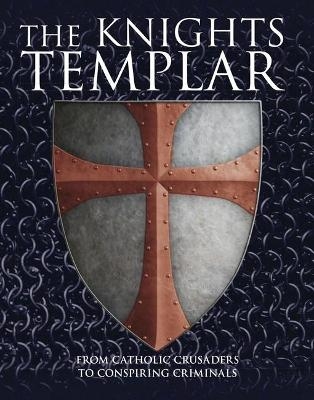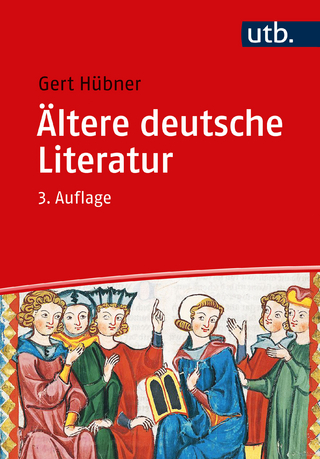
The Knights Templar
Amber Books (Verlag)
978-1-83886-123-0 (ISBN)
The Templars, the Knights Hospitallers, the Teutonic Knights – the chivalric orders founded during the Crusades evoke romantic images of warrior monks who were fierce but spiritual, chaste and pious yet battle-ready. But what were they really like? How did their organisations form, rise and decline? And how much of what we think about them is myth?
The Knights Templar tells the stories of the major and minor military orders from the 11th century to – in the case of the surviving orders – the present day. Organised chronologically, the book follows the fates of orders, from the foundation of the Knights of St Peter in 1053 to the major crusading era in the Holy Land in the 12th and 13th centuries, from the Teutonic Knights in the Baltic to the Reconquista in Iberia and on to the Hospitallers’ later ventures in the Mediterranean and even in the Caribbean.
Full of surprising details, the book not only explores how the military and religious aspects of the orders were reconciled, but also looks more broadly at the orders’ work, from the Templars’ role in the development of modern banking to hospital, castle and cathedral building, from the Teutonic Knights’ treatment of non-believers to the Hospitallers’ battles against Barbary pirates.
Illustrated with 180 colour and black-&-white photographs, artworks and maps, The Knights Templar is a fascinating history of about some of Europe’s most often misunderstood organisations.
Michael Kerrigan was educated at St. Edward’s College and University College, Oxford, England. He is the author of The History of Death, A Dark History: The Roman Emperors, Ancients In Their Own Words, World War II Plans That Never Happened, and American Presidents: A Dark History. He is a columnist, book reviewer, and feature writer for publications including the Scotsman and the Times Literary Supplement. Michael Kerrigan lives with his family in Edinburgh.
INTRODUCTION
Strange as it might seem, the idea of religious monks fighting as warriors made sense to a medieval Christendom which felt that its frontiers – and faith – were under siege.
CHAPTER 1: THE FIRST KNIGHTS
The first Christian military order was the Knights of St Peter, founded by Pope Leo IX to counter the Normans at the Battle of Civitate in Italy in 1053.
1099: Monastic Hospitallers founded after the First Crusade’s recapture of Jerusalem. Based at a hospice in the city, the role expanded from caring for pilgrims to providing armed support for pilgrims making their way to the Holy Land to becoming a military force. They distinguished themselves at the Siege of Ascalon (1153).
How did one become a member of a chivalric order?
CHAPTER 2: SWORN TO SERVE
1118: Foundation of the Knights Templar, who quickly became a favoured charity in Christendom, receiving money, land, businesses, and noble-born sons from families who were eager to help with the fight in the Holy Land. In 1139, a papal bull from Pope Innocent II exempted the order from obedience to local laws. This ruling meant that the Templars could pass freely through all borders, were not required to pay any taxes, and were exempt from all authority except that of the pope.
CHAPTER 3: HOLY WAR, UNHOLY SHAMBLES
Templars were often the heavily armed, advance shock troops, such as at the Battle of Montgisard (1177), where they helped defeat Saladin’s vastly numerically superior forces. It is estimated that at the order’s peak there were between 15,000 and 20,000 Templars, of whom about a tenth were knights.
CHAPTER 4: MIGHT AND MYSTIQUE
Non-military life – With the immense financial donations and land given to the Templars, they established financial networks across Christendom, bought land, acquired vineyards, and were involved in manufacturing and trade.
Teutonic Knights in Transylvania and Prussia, where they were invited in to subdue pagan Baltic Prussians. The Order ruled Prussia under charters issued by the Pope and the Holy Roman Emperor as a sovereign monastic state, comparable to the arrangement of the Knights Hospitallers in Rhodes.
The Teutonic Knights attempted to expand into Kievan Rus, but were defeated by Alexander Nevsky at the Battle on the Ice (1242).
Teutonic Knights building centres and castles, such as Malbork Castle, Poland.
CHAPTER 5: BEFORE A FALL
With the Fall of Acre in 1291, the last Christian enclave in the Holy Land was lost. What was to become of the military orders?
Cyprus became the home of the Templars and the Knights of St. Thomas.
After four years in Cyprus, the Hospitallers conquered Rhodes by force (1306–10). Teutonic Knights directed energies towards converting Lithuania to Christianity. They treated heathens as forced labour.
The Order of St Lazarus moved to France and later Naples.
CHAPTER 6: SEIGE MENTALITY
The End of the Templars: In 1307, Philip IV of France – deeply in debt to the Templars – had many of the order’s members in France arrested, tortured into giving false confessions, and burned at the stake. Pope Clement V disbanded the order in 1312 under pressure from King Philip. Much of their property was turned over to the Hospitallers. The Hospitallers now held assets France, Spain, England, the Holy Roman Empire and Italy.
The extent of the Teutonic Knights was at its greatest in 1407. Three years later, they were defeated by the Polish-Lithuanian Army at the Battle of Grunwald (1410). Most of the senior knights were killed on the battlefield and although they managed to retain their territories, their reputation was significantly diminished.
The Hospitallers in Rhodes fought off Barbary pirates and withstood invasions from the Sultan of Egypt (1444) and Ottoman Sultan Mehmet the Conqueror (1480).
CHAPTER 7: A LONG RETREAT
1525: Teutonic Knights were ousted out from Prussia when it converted to Lutheranism. They held on to lands within the Holy Roman Emperor and Livonia. Over the following centuries, the Order gradually lost these, apart from Vienna and the Tyrol.
In 1522, Sultan Suleiman the Magnificent besieged the Hospitallers in Rhodes with 100,000 men. The 7,000 Hospitallers managed to hold off for six months before, defeated, they were allowed to withdraw to Sicily. In 1530, Charles I of Spain gave the Hospitallers the island of Malta. Suleiman again besieged the Hospitallers (1565), but this time, despite huge numerical superiority, failed.
But with declining tribute from European nations and no crusades on which to serve, the Hospitallers needed a new role and new income. They turned to policing the Mediterranean from Barbary pirates, but with this proving insufficient, they began raiding Muslim ships and became mercenaries in foreign navies, which conflicted with their religious vow: they might now be fighting against other Roman Catholics.
The Hospitallers maintained a presence in the Caribbean until they sold their islands to the French West India Company in 1665.
The French Revolutionary Government seized the properties of the Hospitallers in France in 1792. Malta was captured by Napoleon in 1798. The knights were dispersed: the largest number were given shelter in St Petersburg, but they were now severely weakened and largely dependent upon the Tsar.
In 1834, the Hospitallers settled in Rome. Hospital work, the original work of the order, became once again its main concern.
CHAPTER 8: THE STUFF OF LEGEND
Those orders that still exist are no longer military. In 1929, the Teutonic Knights was converted into a purely religious Catholic order. After the Nazi annexation of Austria, the Order was suppressed, but, at the same time, Teutonic Knights imagery was used as a Nazi propaganda tool. To the Russians and Poles, Teutonic Knights imagery was used as a shorthand for the invading Nazi forces.
Today the Hospitaller Order is known as the Sovereign Military Order of Malta. It is a Roman Catholic lay religious order with hospitals in 120 countries. The Sovereign Military Order of Malta and the Order of the Holy Sepulchre are still conferred as Papal orders of knighthood.
Bibliography
Index
| Erscheinungsdatum | 28.06.2021 |
|---|---|
| Zusatzinfo | 180 photos, maps and artworks; 180 Illustrations, unspecified |
| Sprache | englisch |
| Maße | 186 x 244 mm |
| Gewicht | 600 g |
| Themenwelt | Geschichte ► Allgemeine Geschichte ► Mittelalter |
| Geschichte ► Teilgebiete der Geschichte ► Militärgeschichte | |
| Geisteswissenschaften ► Religion / Theologie | |
| ISBN-10 | 1-83886-123-8 / 1838861238 |
| ISBN-13 | 978-1-83886-123-0 / 9781838861230 |
| Zustand | Neuware |
| Haben Sie eine Frage zum Produkt? |
aus dem Bereich


